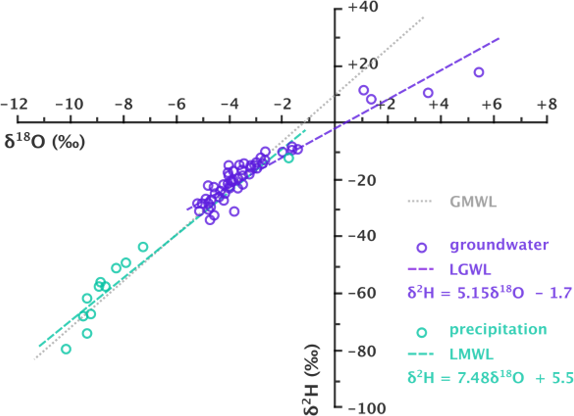7.4 Recharge Estimation
Yidana and others (2016) evaluated water fluxes through the vadose zone in the Nabogo catchment of the White Volta Basin, Ghana. They sampled rain, surface water, pore water (vadose zone) and groundwater (phreatic zone) and analyzed these samples for their stable isotope composition and chloride content (Figure 37). They used Cl mass balance to estimate the fraction of infiltrating water remaining at each sampling interval and therefore estimate evapotranspiration (ET). The Cl content was still changing at their maximum sampling depth of 3 m, suggesting there is more ET taking place at greater depths. Their estimated recharge was 13 to 20 percent of precipitation. They also used differences in the stable isotope composition of phreatic zone groundwater, vadose zone porewater and precipitation to estimate evaporation, according to the Craig-Gordon model (1965) as outlined by Dogramaci and others (2015), which was found to be about 40 percent of precipitation. This suggested that transpiration makes up 40 to 47 percent of the water losses prior to recharge (i.e., with 13 to 20 percent of precipitation recharged and 40 percent evaporated, then the remainder (40 to 47 percent) is transpired by plants). The use of Cl mass balance is sufficient to estimate total ET and hence recharge, but when combined with an evaporation-only estimate based on stable isotopes, transpiration can also be calculated.

Figure 37 – Stable isotope values from the Nabogo catchment in the White Volta Basin of Ghana. Distinct clustering of the precipitation and groundwater, and the low gradient of the groundwater trendline (LGWL) is strong evidence for evaporation of precipitation prior to recharge of groundwater (after Yidana et al., 2016).
